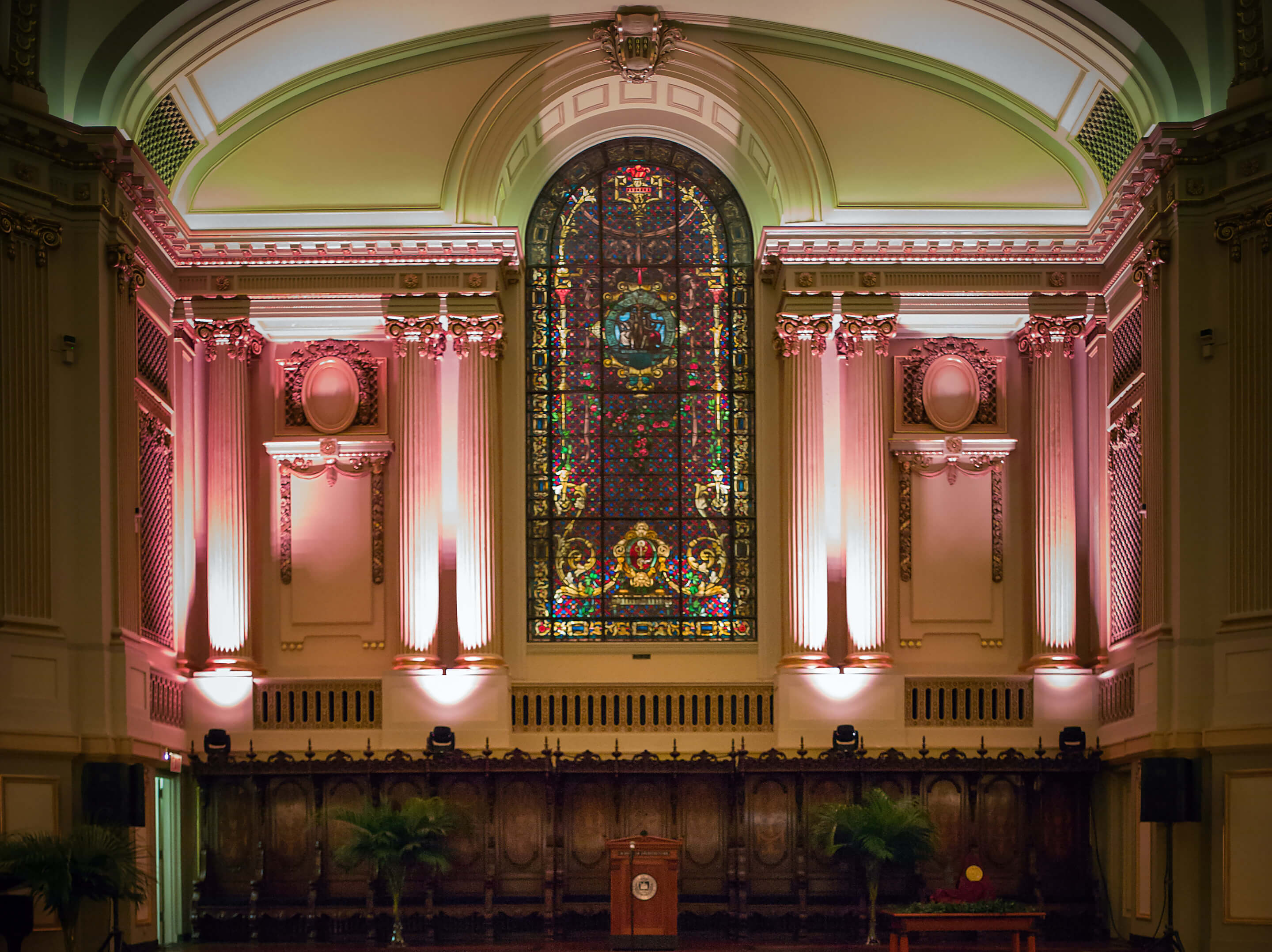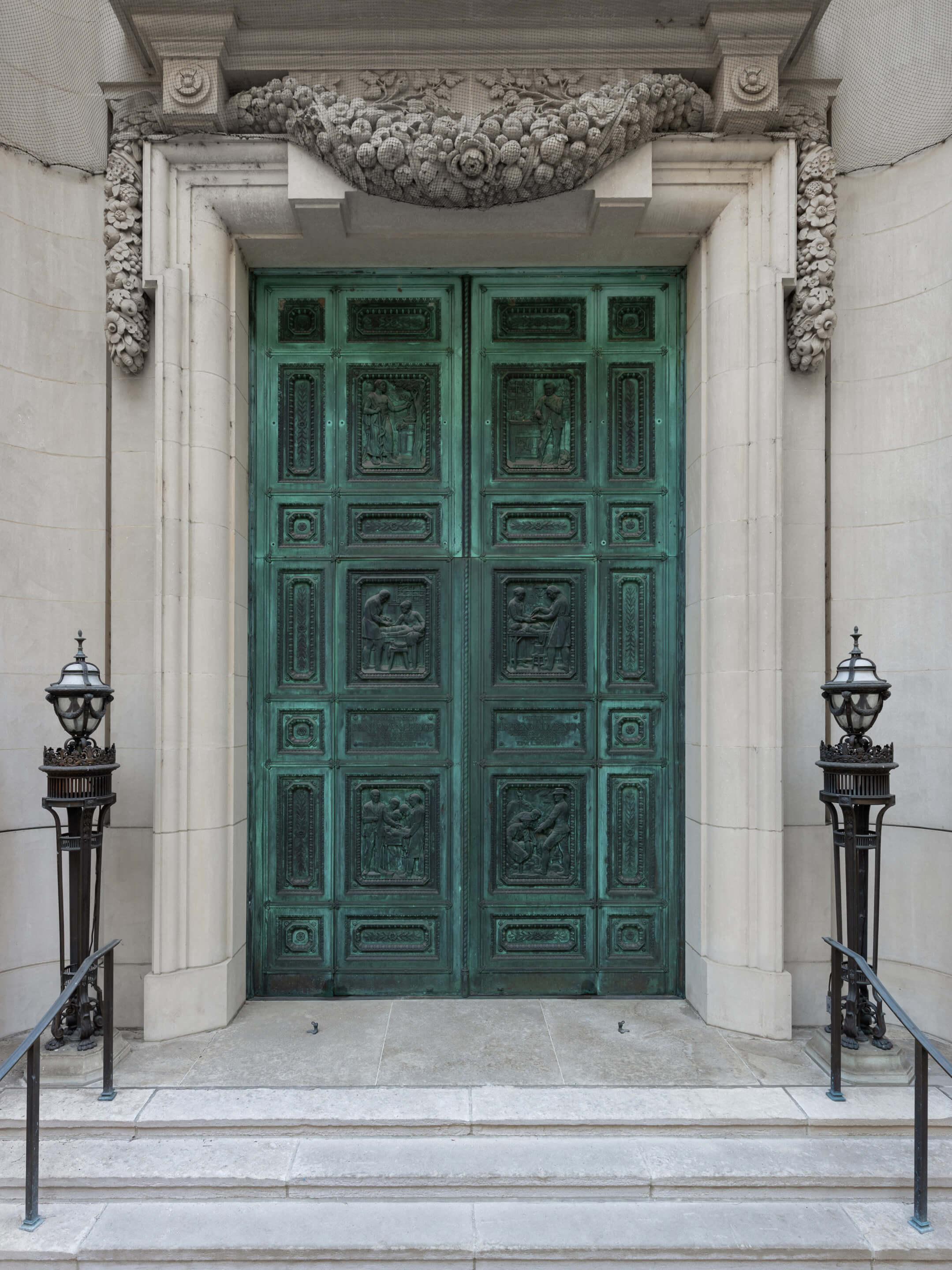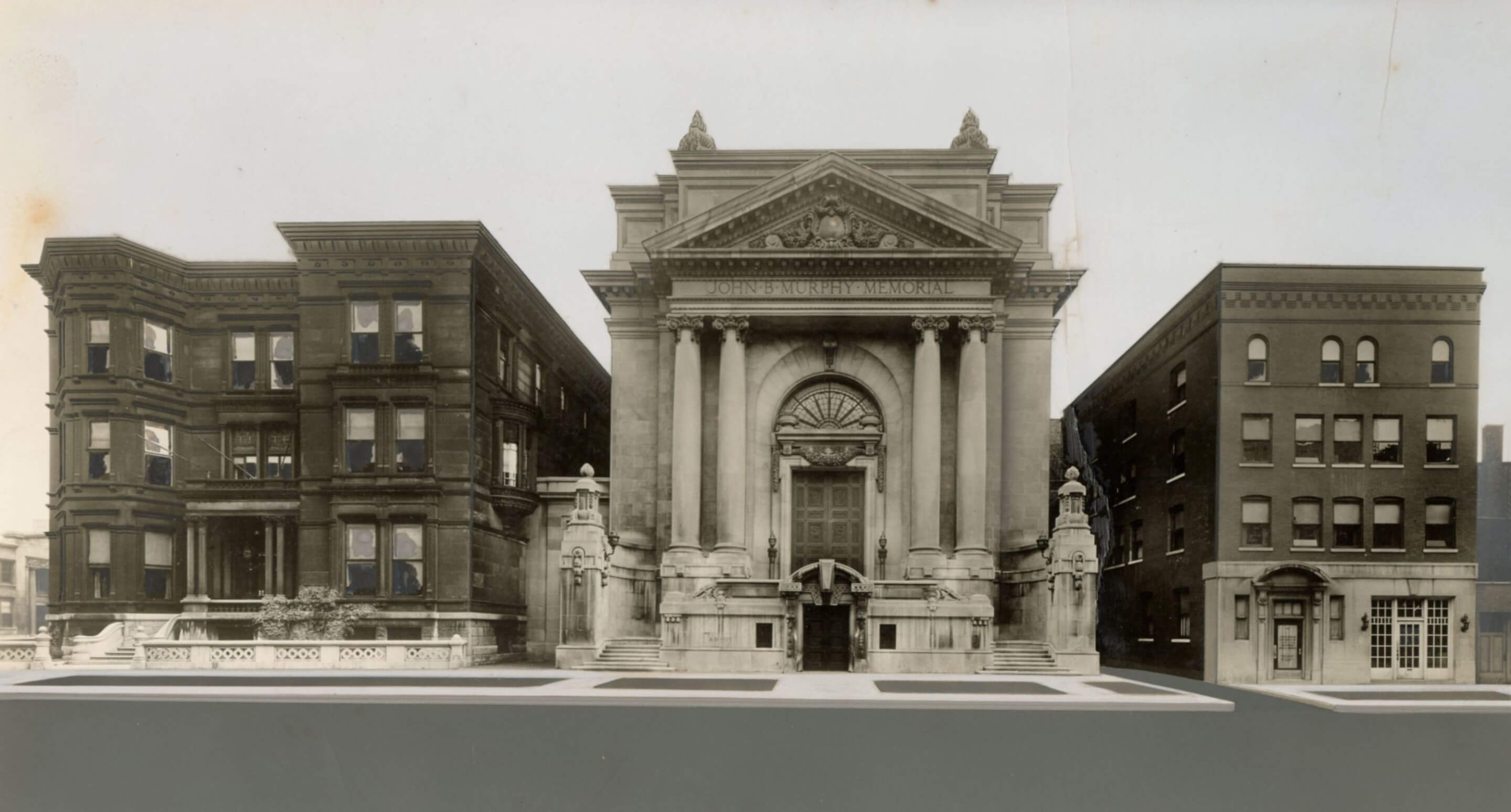Late last month, the Richard R. Driehaus Museum, a storied Chicago institution dedicated to the preservation and interpretation of Gilded Age fine and decorative arts, announced that it had acquired its immediate next-door neighbor from the American College of Surgeons (ACS): The soaring, six-story John B. Murphy Memorial Auditorium.
Located at 50 East Erie Street in the Gold Coast Historic District, the French Renaissance-style edifice was built between 1923 and 1926 and was occupied by the ACS until 1997. Following an expansive 2006 renovation, the ACS, which maintained ownership of the historic Marshall and Fox-designed building until its recent acquisition by the Driehaus Museum, began renting out the sumptuous, three-story auditorium for private and public events.
The acquisition of the Murphy Auditorium, named in honor of ACS founding member John B. Murphy, seems like a natural move for the Driehaus Museum, which purchased its current home, the landmark Nickerson Mansion, from the ACS in 2003. Following a meticulous restoration effort, the museum opened its doors to the public at the Gilded Age manse five years later in 2008. Built for wealthy banker Samuel M. Nickerson, the Edward J. Burling-designed Italianate residence, one of the largest and most ornate homes in Chicago at its completion in 1883, was donated to the ACS in 1916 for use as its headquarters.

Per a press statement released by the museum, the acquisition of the mansion’s 32,193-square-foot neighbor will enable it to “expand its programmatic activities and capacity while carrying forward the tradition of creativity, innovation and education celebrated within these historic buildings since they were erected.”
It’s also a bittersweet transaction as it comes after the passing of the museum’s visionary founder—the Chicago investor, philanthropist, classical architecture enthusiast, and champion of historic preservation, Richard Driehaus—earlier this year on March 9. Driehaus, who was perhaps best locally known for supporting a plethora of causes including community-based arts initiatives and journalistic endeavors, is more widely recognized for the international architecture prize established in 2003 at the University of Notre Dame that bears his name. He was 78 years old at the time of his death.
“It was no secret within the Museum that Mr. Driehaus hoped someday to acquire the Murphy Auditorium, an extension of his passion for preserving the world-class historic architecture for which Chicago is so well known,” said Zachary Lazar, president of the Board of Trustees of the Richard H. Driehaus Museum, in a statement. “We owe ACS our thanks for their excellent oversight and care of this irreplaceable property, and are only sorry that Mr. Driehaus’ untimely passing means he did not have the opportunity to celebrate with us.”

“We could not have found a better buyer than the Driehaus Museum,” added David B. Hoyt, executive director of the ACS. “We admire Richard’s commitment and appreciation for historic preservation. It is an important legacy to have the building remain part of Chicago’s unique architectural fabric now and for years to come.”
With two former ACS properties, the Nickerson Mansion and now the Murphy Auditorium, comprising the Driehaus Museum, this particular stretch of East Erie Street has been further transformed into somewhat of a Driehaus-ian mini-enclave: located just across the street is Cobb & Frost’s Ransom Cable House, an 1886 Chicago landmark that serves as the headquarters of Driehaus Capital Management. In addition to a separate carriage house on that property, a 1900 brick townhouse located directly next to the Cable House is also owned by the investment-management firm.

“These five buildings along Chicago’s historic Erie Street corridor represent a span of styles built in this neighborhood over the course of 40 years, as well as a range of uses as the area transitioned away from a strictly residential character,” said Ward Miller, executive director of Preservation Chicago. “Each of these magnificent structures remind us of Chicago’s incredible architectural legacy and the city’s world-renowned built environment. These buildings also give us insight into the past, offering a sense of human scale and attention to detail, while displaying incredible craftsmanship. They are a visual reflection of the community’s historical development over time. The preservation of these buildings is a priceless legacy to Chicago.”
In addition to its vast permanent collection, special exhibitions currently on view at the Driehaus Museum include PAN: Prints of Avant-Garde Europe, 1895-1900 and William H. Bradley and The Chap-Book from the Collection of Richard H. Driehaus. Both run through August 29.











